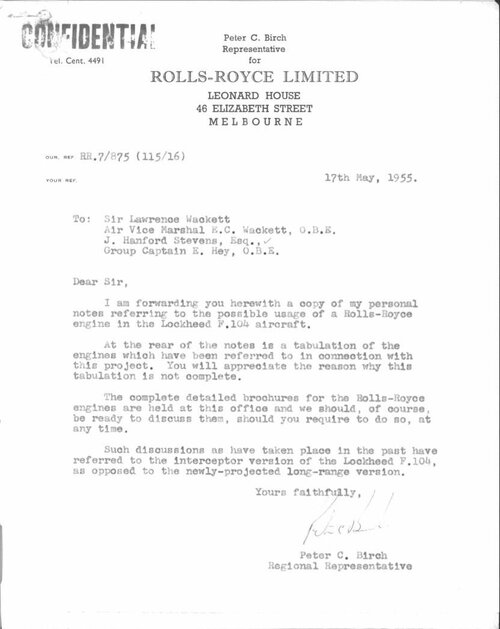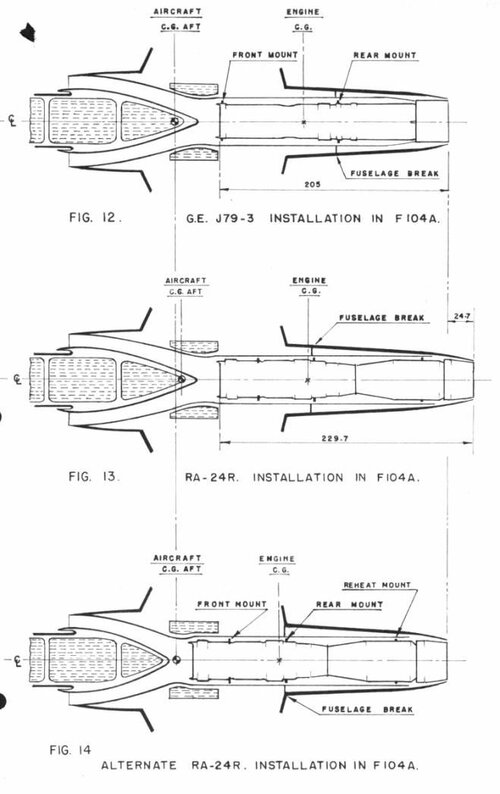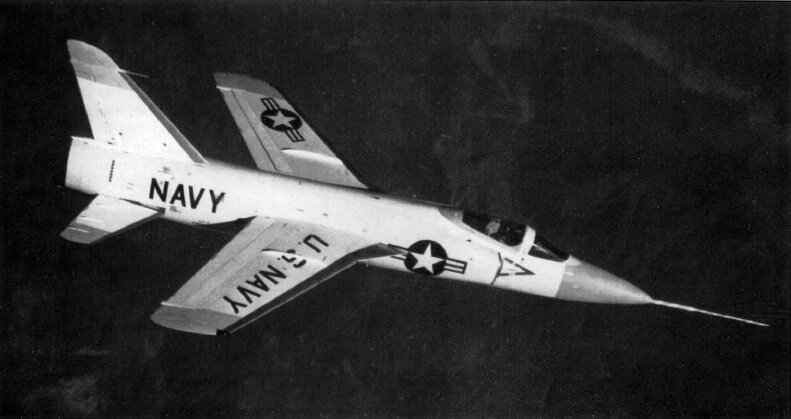Below is from the minutes of the ANZUS meeting on 1 October 1958.
history.state.gov 3.0 shell

history.state.gov
Air Marshal Sir Frederick Scherger:
10
Perhaps I should stand to make myself seen and heard, sir. ...
we have been desperately seeking a small, versatile airplane which can range over the whole area and which can operate from the thousand and one 6000-foot strips left over from the last war and which still are there and from which commercial airplanes are still operating.
We believe we have found the airplane in a project which has been raised and was having a little difficulty here, the Northrop–156, which is a development of the T–38 supersonic trainer. It is a light airplane and can have a lot of sophistication in it, but we don’t want a lot of sophistication. We want it in a fairly cheap and uncomplicated form. It is the kind of thing we can build and build relatively cheaply, and it is the kind of airplane which could be used right throughout that area, where we ourselves are perhaps the most capable in the use of modern equipment. But we know that the Filipinos and Thais and the Pakistanis are having more than a little trouble in operating the F–86’s. They can fly them all right, but even they require a fairly good airfield, and their ferry range isn’t all that much.
We want an airplane that can go across Australia and from the top end of Australia, across the Philippines, up to Singapore.
I found the philosophy in airplanes here is to build a single-seater airplane which costs over two million dollars a copy, which demands, if you are going to make it mobile, in-air refueling capabilities, which we can’t afford, and which requires an eight-to-eleven thousand foot runway. That kind of airplane is beyond our capabilities.
We find ourselves approaching now the time when it looks as though we are going to be priced out of being able to buy airplanes with which we can suitably arm ourselves. It is a fairly disturbing proposition, sir. And it is one which I thought perhaps, and Mr. Casey agreed, should be aired here, because it is the kind of military problem which I believe ANZUS could solve and I believe should solve.
We are willing to build it, we are willing to operate it, and we are very willing to supply it, if we can manufacture it, to the whole SEATO area, if they can afford to buy it and if arrangements can be made for them to get them and use them. That is our problem, sir: How to get the airplane and where to get it—where to get it, rather than how to get it. Europe has nothing. The small NATO fighter which has been proposed to me, the F–91, is just like the Australian boomerang. It is never out of sight. It won’t go far enough. You have these F–105 airplanes, which are over $2,000,000 a copy. Even if we could afford them or build them in sufficient numbers, we couldn’t afford to operate them.
The same applies to the naval tactical fighter, the thing that carries ordinary, or shall I call them conventional bombs. I don’t know why these airplanes are so complex and so sophisticated unless perhaps it is that they are all designed around a nuclear capacity, which of course we don’t possess. We have to base whatever we have on a conventional capacity. I think that is it.
Mr. Irwin:
...
There is undoubtedly a need for a less-sophisticated aircraft that can meet the problem. ...
Ambassador Beale:
Mr. Secretary, could I supplement what Air Marshal Scherger said. This is quite a serious problem for Australia. We have got a first-class aircraft industry in the country. We have a profound political and military necessity for maintaining that aircraft industry in Australia. It is in danger of languishing because we just haven’t got aircraft to make and we can’t plan ahead.
A year or two ago we made a decision to buy and probably also to build to sell the F–104, but when a mission came over here,11 we were, I think, very rightly told, “Don’t be silly. Don’t build that one. It is far too sophisticated for you. If that type of aircraft has to be used in a war which you are planning to participate in, we in the United States will be there with that aircraft.” And quite rightly we would have made a great mistake to build the F–104. And we were also told at the same time, “Why not have a look at the Northrop and one or two others?” This was on the technical level.
11. Apparent reference to a group headed by Sir Philip McBride, then Australian Minister of Defense, which visited Washington in late May and early June 1957.


